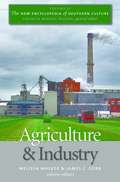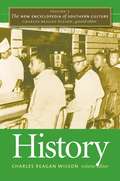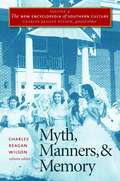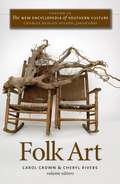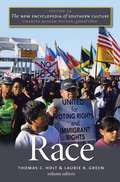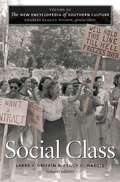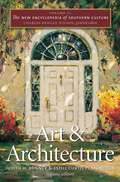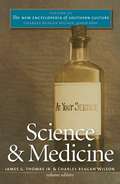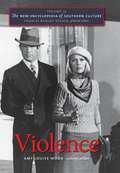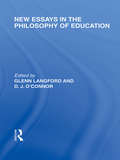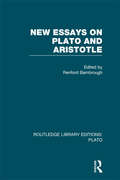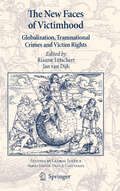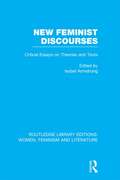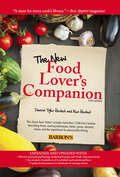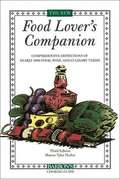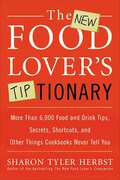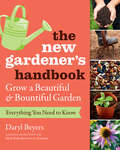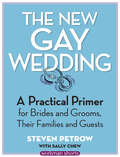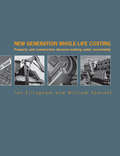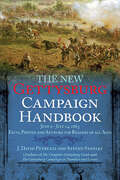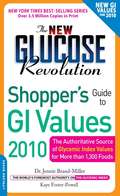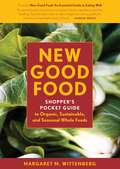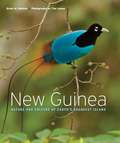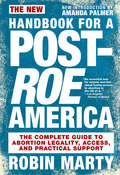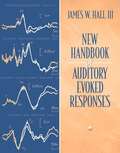- Table View
- List View
The New Encyclopedia of Southern Culture: Agriculture and Industry
by Melissa Walker James C. CobbVolume 11 of The New Encyclopedia of Southern Culture examines the economic culture of the South by pairing two categories that account for the ways many southerners have made their living. In the antebellum period, the wealth of southern whites came largely from agriculture that relied on the forced labor of enslaved blacks. After Reconstruction, the South became attractive to new industries lured by the region's ongoing commitment to low-wage labor and management-friendly economic policies. Throughout the volume, articles reflect the breadth and variety of southern life, paying particular attention to the region's profound economic transformation in recent decades. The agricultural section consists of 25 thematic entries that explore issues such as Native American agricultural practices, plantations, and sustainable agriculture. Thirty-eight shorter pieces cover key crops of the region--from tobacco to Christmas trees--as well as issues of historic and emerging interest--from insects and insecticides to migrant labor. The section on industry and commerce contains 13 thematic entries in which contributors address topics such as the economic impact of military bases, resistance to industrialization, and black business. Thirty-six topical entries explore particular industries, such as textiles, timber, automobiles, and banking, as well as individuals--including Henry W. Grady and Sam M. Walton--whose ideas and enterprises have helped shape the modern South.
The New Encyclopedia of Southern Culture: History
by Charles Reagan WilsonProviding a chronological and interpretive spine to the twenty-four volumes of The New Encyclopedia of Southern Culture, this volume broadly surveys history in the American South from the Paleoindian period (approximately 8000 B.C.E.) to the present. In 118 essays, contributors cover the turbulent past of the region that has witnessed frequent racial conflict, a bloody Civil War fought and lost on its soil, massive in- and out-migration, major economic transformations, and a civil rights movement that brought fundamental change to the social order. <P><P> Charles Reagan Wilson's overview essay examines the evolution of southern history and the way our understanding of southern culture has unfolded over time and in response to a variety of events and social forces--not just as the opposite of the North but also in the larger context of the Atlantic World. Longer thematic essays cover major eras and events, such as early settlement, slave culture, Reconstruction, the New Deal, and the rise of the New South. Brief topical entries cover individuals--including figures from the Civil War, the civil rights movement, and twentieth-century politics--and organizations such as the Southern Christian Leadership Conference, Daughters of the Confederacy, and Citizens' Councils, among others. Together, these essays offer a sweeping reference to the rich history of the region.
The New Encyclopedia of Southern Culture: Myth, Manners, and Memory
by Charles Reagan WilsonProviding a chronological and interpretive spine to the twenty-four volumes of The New Encyclopedia of Southern Culture, this volume broadly surveys history in the American South from the Paleoindian period (approximately 8000 B.C.E.) to the present. In 118 essays, contributors cover the turbulent past of the region that has witnessed frequent racial conflict, a bloody Civil War fought and lost on its soil, massive in- and out-migration, major economic transformations, and a civil rights movement that brought fundamental change to the social order. Charles Reagan Wilson's overview essay examines the evolution of southern history and the way our understanding of southern culture has unfolded over time and in response to a variety of events and social forces--not just as the opposite of the North but also in the larger context of the Atlantic World. Longer thematic essays cover major eras and events, such as early settlement, slave culture, Reconstruction, the New Deal, and the rise of the New South. Brief topical entries cover individuals--including figures from the Civil War, the civil rights movement, and twentieth-century politics--and organizations such as the Southern Christian Leadership Conference, Daughters of the Confederacy, and Citizens' Councils, among others. Together, these essays offer a sweeping reference to the rich history of the region.
The New Encyclopedia of Southern Culture: Folk Art
by Charles Reagan Wilson Carol Crown Cheryl RiversFolk art is one of the American South's most significant areas of creative achievement, and this comprehensive yet accessible reference details that achievement from the sixteenth century through the present. This volume of The New Encyclopedia of Southern Culture explores the many forms of aesthetic expression that have characterized southern folk art, including the work of self-taught artists, as well as the South's complex relationship to national patterns of folk art collecting. Fifty-two thematic essays examine subjects ranging from colonial portraiture, Moravian material culture, and southern folk pottery to the South's rich quilt-making traditions, memory painting, and African American vernacular art, and 211 topical essays include profiles of major folk and self-taught artists in the region.
The New Encyclopedia of Southern Culture: Race
by Charles Reagan Wilson Laurie B. Green Thomas C. HoltThere is no denying that race is a critical issue in understanding the South. However, this concluding volume of The New Encyclopedia of Southern Culture challenges previous understandings, revealing the region's rich, ever-expanding diversity and providing new explorations of race relations. In 36 thematic and 29 topical essays, contributors examine such subjects as the Tuskegee Syphilis Study, Japanese American incarceration in the South, relations between African Americans and Native Americans, Chinese men adopting Mexican identities, Latino religious practices, and Vietnamese life in the region. Together the essays paint a nuanced portrait of how concepts of race in the South have influenced its history, art, politics, and culture beyond the familiar binary of black and white.
The New Encyclopedia of Southern Culture: Social Class
by Charles Reagan Wilson Larry J. Griffin Peggy G. HargisThis volume of The New Encyclopedia of Southern Culture offers a timely, authoritative, and interdisciplinary exploration of issues related to social class in the South from the colonial era to the present. With introductory essays by J. Wayne Flynt and by editors Larry J. Griffin and Peggy G. Hargis, the volume is a comprehensive, stand-alone reference to this complex subject, which underpins the history of the region and shapes its future.In 58 thematic essays and 103 topical entries, the contributors explore the effects of class on all aspects of life in the South--its role in Indian removal, the Civil War, the New Deal, and the civil rights movement, for example, and how it has been manifested in religion, sports, country and gospel music, and matters of gender. Artisans and the working class, indentured workers and steelworkers, the Freedmen's Bureau and the Knights of Labor are all examined. This volume provides a full investigation of social class in the region and situates class concerns at the center of our understanding of Southern culture.
The New Encyclopedia of Southern Culture: Art and Architecture
by Charles Reagan Wilson Estill Curtis Pennington Judith H. BonnerFrom the Potomac to the Gulf, artists were creating in the South even before it was recognized as a region. The South has contributed to America's cultural heritage with works as diverse as Benjamin Henry Latrobe's architectural plans for the nation's Capitol, the wares of the Newcomb Pottery, and Richard Clague's tonalist Louisiana bayou scenes. This comprehensive volume shows how, through the decades and centuries, the art of the South expanded from mimetic portraiture to sophisticated responses to national and international movements. The essays treat historic and current trends in the visual arts and architecture, major collections and institutions, and biographies of artists themselves. As leading experts on the region's artists and their work, editors Judith H. Bonner and Estill Curtis Pennington frame the volume's contributions with insightful overview essays on the visual arts and architecture in the American South.
The New Encyclopedia of Southern Culture: Science and Medicine
by Charles Reagan Wilson James G. ThomasScience and medicine have been critical to southern history and the formation of southern culture. For three centuries, scientists in the South have documented the lush natural world around them and set a lasting tradition of inquiry. The medical history of the region, however, has been at times tragic. Disease, death, and generations of poor health have been the legacy of slavery, the plantation economy, rural life, and poorly planned cities. The essays in this volume explore this legacy as well as recent developments in technology, research, and medicine in the South. Subjects include natural history, slave health, medicine in the Civil War, public health, eugenics, HIV/AIDS, environmental health, and the rise of research institutions and hospitals, to name but a few. With 38 thematic essays, 44 topical entries, and a comprehensive overview essay, this volume offers an authoritative reference to science and medicine in the American South.
The New Encyclopedia of Southern Culture: Violence
by Amy Louise WoodMuch of the violence that has been associated with the United States has had particular salience for the South, from its high homicide rates, or its bloody history of racial conflict, to southerners' popular attachment to guns and traditional support for capital punishment. With over 95 entries, this volume of The New Encyclopedia of Southern Culture explores the most significant forms and many of the most harrowing incidences of violence that have plagued southern society over the past 300 years. Following a detailed overview by editor Amy Wood, the volume explores a wide range of topics, such as violence against and among American Indians, labor violence, arson, violence and memory, suicide, and anti-abortion violence. Taken together, these entries broaden our understanding of what has driven southerners of various classes and various ethnicities to commit acts of violence, while addressing the ways in which southerners have conceptualized that violence, responded to it, or resisted it. This volume enriches our understanding of the culture of violence and its impact on ideas about law and crime, about historical tradition and social change, and about race and gender--not only in the South but in the nation as a whole.
New Essays in the Philosophy of Education (International Library of the Philosophy of Education Volume 13)
by Glenn LangfordThe contributors to this collection of essays offer a stimulating and varied range of approaches to this developing area. The volume includes discussions on the concept of education and such related topics as indoctrination and the nature and scope of the theory of education. Aspects of education including the field of moral education, and issues which are reflected prominently in the curricula of such subjects as Mathematics and Science in schools and colleges are considered.
New Essays on Plato and Aristotle: Plato: New Essays On Plato And Aristotle (Routledge Library Editions: Plato)
by Renford BambroughWhat can the study of the history of ancient philosophy bring to the study of contemporary philosophical problems and questions? In New Essays on Plato and Aristotle eight distinguished philosophers address topics in Greek philosophy that are connected with current philosophical issues. All the essays are original and include Gilbert Ryle on Dialectic in the Academy and R. M. Hare on Plato’s indictment of mathematicians.
The New Faces of Victimhood
by Jan Van Dijk Rianne LetschertBesides generating wealth, globalization makes victims, including victims of new forms of crime. In this edited book of scholarly essays, international lawyers and criminologists reflect on the legal challenges posed by these dark sides of globalization. Examples include transnational organised crime, human trafficking and corruption, cyber crimes, international terrorism, global corporate crime and cross-border environmental crimes. The authors reflect on the limits of domestic systems of justice in providing protection, empowerment and redress to the victims of these emerging forms of global insecurity. They argue for the need of better international or supra-national institutional arrangements such as legal instruments and actions of the United Nations or regional organizations such as the European Union. In part I Jan Van Dijk and Rianne Letschert present an overview of trends in criminal victimization against the backdrop of globalization using a unique set of statistical indicators. By placing this issue in the framework of the human security concept, the authors draw out its broader political and normative implications. Theologist Ralf Bodelier explains how modern communication technologies have heightened sensitivities among the general public for human insecurities anywhere in the world. In his view, a new global conscience is in the making that may become the cornerstone of international solidarity and action. Marc Groenhuijsen and Rianne Letschert describe the emergence of national and international legal and institutional arrangements to offer remedies to victims of crime in an era of globalization. In part II a selection of experts analyse the specific issues surrounding the protection and empowerment of victims of different types of international crimes such as human trafficking, organised crime/corruption, terrorism, global corporate crime and cross border environmental crimes. In part III focused attention is given to the special challenges and opportunities of protecting and assisting crime victims in cyberspace. Part IV deals with emerging victim issues in humanitarian law such as the accountability of private military companies and the implementation of the ambitious victim provisions in the statute of the International Criminal Court including the establishment of a global fund for reparations. In the final part of the book some of its core authors formulate their ideas about the international institutional arrangements that should be put in place to offer justice to the victims of globalization. A concrete proposal is made for the transformation of the United Nations 1985 Declaration on the Principles of Justice for Victims of Crime and Abuse of Power into a full-fledged UN convention. In the final chapter further proposals are made for the increased involvement of regional organisations such as the European Union in the protection of victims of global crime.
New Feminist Discourses: Critical Essays on Theories and Texts (Routledge Library Editions: Women, Feminism and Literature)
by Isobel ArmstrongThis collection of new feminist essays represents the work of young critics researching and teaching in British Universities. Aiming to set the agenda for feminist criticism in the nineties, the essays debate themes crucial to the development of feminist thought: among them, the problems of gendered knowledge and the implications of accounts of gendered language, cultural restraints on the representation of sexuality, women’s agency, cultural and political change, a feminist aesthetics and new readings of race and class. This variety is given coherence by a unity of aim – to forge new feminist discourses by addressing conceptual and cultural questions central to problems of gender and sexual difference. The topics of discussion range from matrilinear thought to seventeenth-century prophecy; the poetry of Amelia Lanyer to Julia Margaret Cameron’s photographs; from Dorothy Richardson and Virginia Woolf to eighteenth-century colonial painting of the South Pacific; from medieval romance to feminist epistemology. The essays utilise and question the disciplines of literary criticism, art history, photography, psychoanalysis, Marxist history and post-structuralist theory.
The New Food Lover's Companion
by Ron Herbst Sharon Tyler HerbstThe fifth edition of this widely praised and highly esteemed reference guide has been updated with new information to reflect the way we eat in today's world. This latest version is updated to take into account our healthier lifestyles and more diverse palates, including:Over 500 new cultural listings, including Korean, Persian, and South American additionsUpdated information for hundreds of existing entriesA blood alcohol concentration chart for men and womenAn extensive breakdown of food labels and nutritional factsDepartment of Agriculture recommendations for a 2,000 calorie per day food planAmong the myriad of foods and culinary subjects defined and explained are cooking tools and techniques, meat cuts, breads, pastas, and literally everything else related to good food and enjoyable dining—a veritable food bible for the novice home-cook, culinary student, or the self-proclaimed foodie. Handy appendices cover many topics including suggestions for substituting recipe ingredients, a microwave oven conversion chart, recommended safe cooking temperatures for meats and fish, and much more.The New Food Lover's Companion is a reference guide—not a cookbook—but it includes hundreds of cooking tips plus an extensive bibliography of recommended cookbooks. More than 7200 entries plus line art are included in this seminal work.
The New Food Lover's Companion (3rd edition)
by Sharon Tyler HerbstDefinitions of nearly 6000 food, drink and culinary terms, along with a pronunciation guide and 29 appendices covering a variety of subjects
The New Food Lover's Tiptionary: More Than 6,000 Food and Drink Tips, Secrets, Shortcuts, and Other Things Cookbooks Never Tell You
by Sharon T. HerbstBoth experienced and novice cooks will love this A-to-Z guide packed with more than 6,000 tips, shortcuts and other culinary wisdom cookbooks never tell you. Find all the answers you'll ever need to a universe of cooking quandaries and questions on hundreds of subjects, including foods, beverages, kitchen equipment, cooking techniques, entertaining ideas and smart ways to use leftovers. Plus, there are loads of quick and easy reference charts, a handy system of cross-referencing and well over a hundred shorthand-style recipes.
The New Gardener's Handbook: Everything You Need to Know to Grow a Beautiful and Bountiful Garden
by Daryl Beyers&“Gardeners just starting out will earn a sense of accomplishment and a good dose of knowledge.&” —Booklist Every new gardener has to start somewhere—and the process can be intimidating. Knowing when and what to plant, how to care for the plants once they&’re in the ground, and how to keep pests and diseases away is a lot to take on. Luckily, Daryl Beyers—an expert from the New York Botanical Garden—has written what will be a go-to resource for decades to come. The New Gardener&’s Handbook is a comprehensive overview of the fundamentals of gardening, based on the introductory gardening class that Beyers teaches at NYBG. Readers will learn about soil, plant selection, propagation, planting and mulching, watering and feeding, pruning, and weeds, pests, and diseases. The information applies to both ornamental and edible plants. Featuring inspiring photography and helpful illustrations, The New Gardener&’s Handbook gives home gardeners a foundation upon which they can grow, and encourages them to apply the lessons they&’ve learned in an intuitive, natural way.
The New Gay Wedding: A Practical Primer for Brides and Grooms, Their Families and Guests: A Workman Short
by Steven Petrow Sally ChewTimes have changed—and with them, so have the rules. Introducing a mini ebook for today’s gay and lesbian weddings and commitment ceremonies, covering what to call the event, who pays for what, and the right way to word a same-sex wedding invitation. From the nitty-gritty (what are your state’s requirements for making it legal?) to the fun-and-pretty (what to wear!), THE NEW GAY WEDDING is a handy one-stop shop for gay couples planning their big day.Packed with Q&As from brides- and grooms-to-be and their families and friends, this adaptation from STEVEN PETROW’S COMPLETE GAY & LESBIAN MANNERS covers what’s unique about gay weddings (how to find LGBT-friendly wedding vendors, the roles of family members), but also provides a practical overview of the parts that aren’t: how to save money on the venue, the purpose of rehearsal dinner, and the art and timing of the thank-you note.Steven Petrow, former president of the National Gay & Lesbian Journalists Association, is a syndicated writer on LGBT manners for The Huffington Post, Yahoo! Shine, LOGO, and the “Q” Syndicate. The same-sex wedding expert for The New York Times, he has also written for The Advocate, The Los Angeles Times, Salon, The Daily Beast, and Out.com. His previous books include The Essential Book of Gay Manners & Etiquette and When Someone You Know Has AIDS. He lives in Chapel Hill, North Carolina.About this ebook: Workman Shorts is a line of bite-size, subject-specific ebooks curated from our library of trusted books and authors.
New Generation Whole-Life Costing: Property and Construction Decision-Making Under Uncertainty
by William Fawcett Ian EllinghamNew Generation Whole-Life Costing presents an innovative approach to decision-making and risk management for construction and real estate. It applies the options-based approach that has revolutionized the management of uncertainty in the business world. Based on government-sponsored research at Cambridge Architectural Research Ltd., the book introduces the idea of 'lifecycle options'. The desirability of whole-life costing is widely accepted, but take-up levels have been low. One problem is that traditional techniques fail to take account of future uncertainty. In contrast, the new options-based approach considers a diversity of possible futures, and favours flexible strategies that incorporate lifecycle options. This approach leads to more cost-effective and sustainable decisions, minimizing the risk of under- or over-investment. This book is structured around realistic case studies that demonstrate the prevalence of lifecycle options. These case studies are backed up by clear presentation of basic principles and mathematical techniques allowing the book to be read either as a stimulating introduction to new concepts, or as a guide to mathematical methods.
The New Gettysburg Campaign Handbook: Facts, Photos, and Artwork for Readers of All Ages, June 9–July 14, 1863
by Steven Stanley J. David PetruzziThe New Gettysburg Campaign Handbook is an informative full-color guide for American Civil War and Gettysburg enthusiasts of all ages. Authors J. David Petruzzi and Steven Stanley use clear and concise writing broken down into short and easy to understand chapters complete with original maps, modern and historic photographs, tables, charts, and artwork to narrate the history of the Gettysburg Campaign from the opening battle at Brandy Station in Virginia on June 9, 1863, to the escape of Gen. Robert E. Lee’s Confederate Army of Northern Virginia across the Potomac River on July 14, 1863. Chapters include quotes of interest from participants, tables and charts of the ages and seniority ranking of the generals of both sides; weather observations during the battle; a stunning photographic study of the entire campaign; a discussion of the battle’s myths and controversies; biographies of select officers, civilians, and battlefield photographers; trivia about the campaign; a comprehensive order of battle; a suggested reading list and websites; and much more. As enjoyable to look at as it is easy to use, every casual and serious student of the Civil War and Gettysburg will want a copy of The New Gettysburg Campaign Handbook as a constant companion while reading other books on the campaign—and even as a supplement and general field guide while walking the hallowed Pennsylvania ground. About the Authors: J. David Petruzzi is an award-winning Civil War cavalry historian. He is the author of many articles for a wide variety of publications, and has written or co-authored several books including: (with Eric Wittenberg) Plenty of Blame to Go Around: Jeb Stuart’s Controversial Ride to Gettysburg (Savas Beatie, 2006); (with Wittenberg and Michael F. Nugent) One Continuous Fight: The Retreat from Gettysburg and the Pursuit of Lee’s Army of Northern Virginia, July 4-14, 1863 (Savas Beatie, 2008); and (with Steven Stanley) The Complete Gettysburg Guide: Walking and Driving Tours of the Battlefield, Town, Cemeteries, Field Hospital Sites, and other Topics of Historical Interest (Savas Beatie, 2009), winner of the U.S. Army Historical Foundation’s 2009 Distinguished Writing Award, Reference Category. With Stanley, he also produced The Complete Gettysburg Guide: Audio Driving and Walking Tour, Volume One: The Battlefield (Savas Beatie, 2010). Steven Stanley lives in Gettysburg and is a graphic artist specializing in historical map design and battlefield photography. His maps, considered among the best in historical cartography, have been a longtime staple of the Civil War Trust and have helped raise millions of dollars for the Trust through their preservation appeals and interpretation projects. Steve’s maps have appeared in a wide variety of publications. Co-authored by J. David Petruzzi, Steve produced the maps and the complete design of The Complete Gettysburg Guide: Walking and Driving Tours of the Battlefield, Town, Cemeteries, Field Hospital Sites, and other Topics of Historical Interest (Savas Beatie, 2009), the winner of the U.S. Army Historical Foundation’s 2009 Distinguished Writing Award, Reference Category, as well as The Complete Gettysburg Guide: Audio Driving and Walking Tour, Volume One: The Battlefield (Savas Beatie, 2010).
The New Glucose Revolution Shopper's Guide to GI Values 2010: The Authoritative Source of Glycemic Index Values for More Than 1,300 Foods
by Kaye Foster-Powell Jennie Brand-MillerReference book for 1300 glycemic index values,
New Good Food Pocket Guide, rev: Shopper's Pocket Guide to Organic, Sustainable, and Seasonal Whole Foods
by Margaret M. WittenbergThis convenient pocket guide packs the knowledgeable information of the original whole foods bible into a concise, easy-to-carry format. Focusing mainly on core food products available at large-scale supermarkets and natural foods stores, easy-reference entries help shoppers navigate their many options when choosing organic, whole, local, and sustainably and ethically produced foods. An updated pocket-size edition of the definitive guide to buying, storing, and preparing whole foods. Handy charts and tables summarize what's in season when. Organic food sales totaled nearly $17 billion in 2006, up 22 percent from the previous year, in the U.S. alone. From the Trade Paperback edition.
New Guinea: Nature and Culture of Earth's Grandest Island
by Bruce M. Beehler Tim LamanAn enthralling exploration of the biologically richest island on Earth, featuring more than 200 spectacular color images by award-winning National Geographic photographer Tim LamanIn this beautiful book, Bruce Beehler, a renowned author and expert on New Guinea, and award-winning National Geographic photographer Tim Laman take the reader on an unforgettable journey through the natural and cultural wonders of the world's grandest island. Skillfully combining a wealth of information, a descriptive and story-filled narrative, and more than 200 stunning color photographs, the book unlocks New Guinea's remarkable secrets like never before.Lying between the Equator and Australia's north coast, and surrounded by the richest coral reefs on Earth, New Guinea is the world's largest, highest, and most environmentally complex tropical island—home to rainforests with showy rhododendrons, strange and colorful orchids, tree-kangaroos, spiny anteaters, ingenious bowerbirds, and spectacular birds of paradise. New Guinea is also home to more than a thousand traditional human societies, each with its own language and lifestyle, and many of these tribes still live in isolated villages and serve as stewards of the rainforests they inhabit.Accessible and authoritative, New Guinea provides a comprehensive introduction to the island's environment, animals, plants, and traditional rainforest cultures. Individual chapters cover the island's history of exploration; geology; climate and weather; biogeography; plantlife; insects, spiders, and other invertebrates; freshwater fishes; snakes, lizards, and frogs; birdlife; mammals; paleontology; paleoanthropology; cultural and linguistic diversity; surrounding islands and reefs; the pristine forest of the Foja Mountains; village life; and future sustainability.Complete with informative illustrations and a large, detailed map, New Guinea offers an enchanting account of the island's unequalled natural and cultural treasures.
New Handbook for a Post-Roe America: The Complete Guide to Abortion Legality, Access, and Practical Support
by Robin MartyA completely new edition--with a new introduction by Amanda Palmer--of Robin Marty's best-selling manual on what to do if/when Roe v. Wade is overturned.The New Handbook for a Post-Roe America is a comprehensive and user-friendly manual for understanding and preparing for the looming changes to reproductive rights law, and getting the health care you need. Activist and writer Robin Marty guides readers through various worst-case scenarios of a post-Roe America, and offers ways to fight back, including: how to acquire financial support, how to use existing networks and create new ones, and how to, when required, work outside existing legal systems. She details how to plan for your own emergencies, how to start organizing now, what to know about self-managed abortion care with pills and/or herbs, and how to avoid surveillance. The only guidebook of its kind, The New Handbook for a Post-Roe America includes new chapters that cover the needs and tools available for pregnant people across the country. This second edition features extensively updated information on abortion legality and access in the United States, and approximately one hundred pages of new content, covering such topics as independent alternatives to Planned Parenthood, "auntie networks," taxpayer-funded abortions, and using social media wisely in the age of surveillance.
New Handbook For Auditory Evoked Responses
by James HallThis practical and comprehensive sourcebook sets out to strengthen the practitioner's understanding of clinically important auditory evoked responses (AERs). It enhances understanding of the anatomy, measurement and interpretation of AERs, helps improve AER recording procedures using stimulus techniques, and introduces new evoked response patient services.
